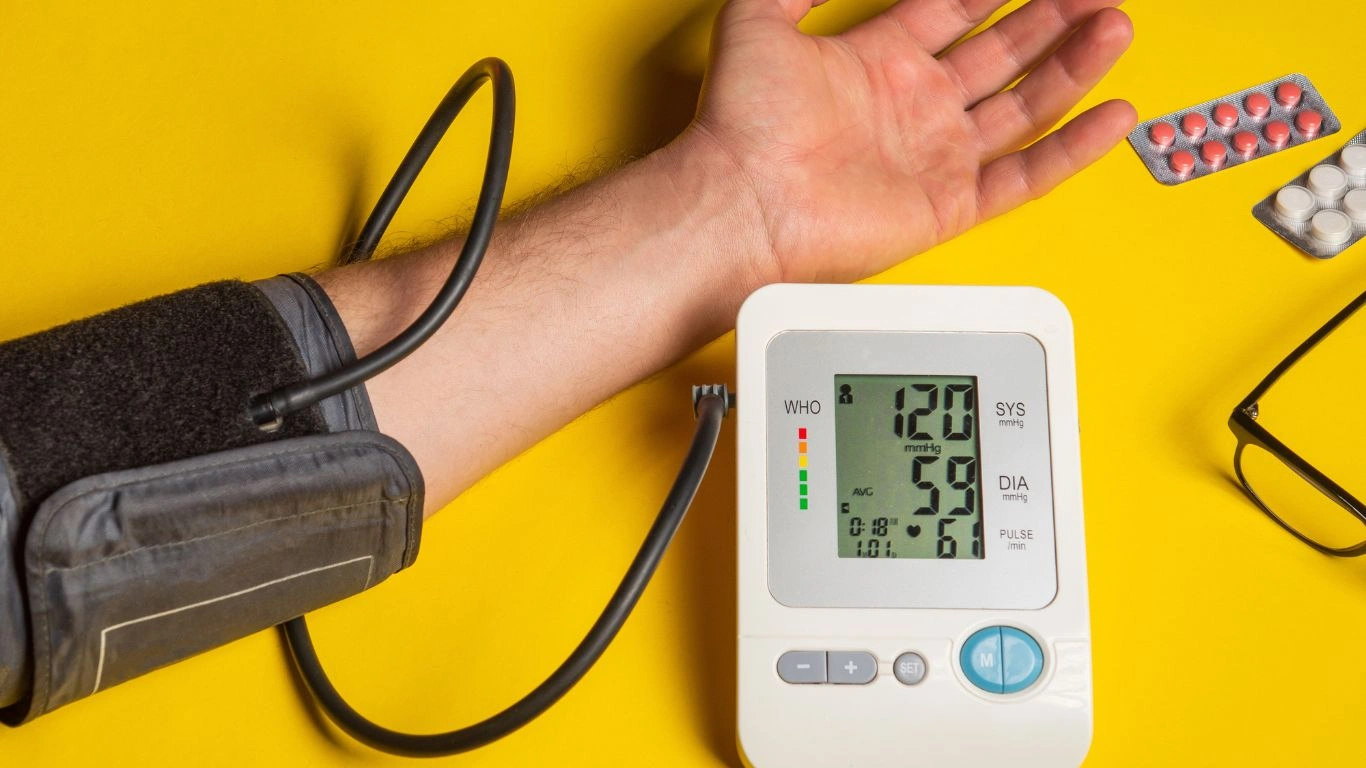The Role of Fiber in Managing Hypertension – A Practical Guide
Looking for a natural way to help manage your hypertension? Adding more fiber to your diet could be one of the easiest and most effective changes you can make to improve your heart health. Let’s dive into why fiber is so important for controlling blood pressure and how you can incorporate it into your meals.
If you’re dealing with hypertension (or just looking to stay on top of your blood pressure), you might be wondering what kind of changes you can make to your diet. One of the best moves? Eating more fiber! Fiber isn’t just good for your digestive system; it’s also essential for keeping your heart and blood vessels in top shape. In this guide, we’re going to break down the role of fiber in managing hypertension, why it’s so effective, and how you can easily boost your intake.

Why Fiber is Essential for Heart Health
We often hear that fiber is important for digestion, but it’s also incredibly beneficial for managing blood pressure. The good news? It’s really simple to get more fiber into your daily routine. Fiber comes in two main forms: soluble and insoluble, and both play their part in heart health.
Soluble Fiber: The Blood Pressure Helper
Soluble fiber dissolves in water to form a gel-like substance in your stomach. This type of fiber is known for its ability to help lower cholesterol levels, which can reduce your risk of heart disease and lower blood pressure. When you eat foods rich in soluble fiber, they help regulate your body’s sugar and fat levels, making it easier to maintain a healthy blood pressure. Think oats, beans, lentils, apples, and carrots!
Insoluble Fiber: The Digestive Supporter
On the other hand, insoluble fiber doesn’t dissolve in water, but it plays a vital role in promoting good digestion. It helps keep your digestive system moving and supports regular bowel movements. While it’s not directly linked to lowering blood pressure, keeping your digestive system healthy and free of bloating or discomfort means less stress on your body overall.

How Does Fiber Help Manage Hypertension?
So, how exactly does fiber help manage hypertension? There are a few key ways it can make a real difference:
1. Reduces Cholesterol Levels
As we mentioned, fiber—especially soluble fiber—binds to cholesterol and helps flush it out of your system. Lower cholesterol means less plaque buildup in your arteries, which keeps your blood vessels flexible and less prone to high pressure.
2. Improves Blood Sugar Levels
High blood sugar can contribute to high blood pressure, and fiber plays a role in keeping blood sugar levels in check. By slowing down the absorption of sugar into your bloodstream, fiber helps prevent blood sugar spikes, which can help prevent high blood pressure.
3. Promotes Weight Loss
High blood pressure is often associated with being overweight or obese. Fiber-rich foods are filling, which means you’re less likely to overeat. Fiber also helps regulate appetite by promoting feelings of fullness, so it’s easier to maintain a healthy weight and reduce the strain on your cardiovascular system.
4. Reduces Inflammation
Inflammation in the body can increase the risk of developing hypertension. Foods high in fiber are known to have anti-inflammatory properties, helping reduce chronic inflammation and supporting better blood pressure regulation.

Best Fiber-Rich Foods for Managing Hypertension
Now that we know fiber’s amazing benefits, let’s look at some of the best sources of fiber that can help you manage hypertension.
1. Oats
Oats are a powerhouse of soluble fiber, making them a top choice for anyone looking to lower their blood pressure. Enjoy oatmeal for breakfast or add oats to smoothies and baked goods for an easy fiber boost.
2. Beans and Lentils
Beans, lentils, chickpeas, and other legumes are rich in both soluble and insoluble fiber. They’re not only great for heart health, but they also help stabilize blood sugar levels, making them a must-have in any blood pressure-friendly diet.
3. Fruits
Fruits like apples, pears, berries, and citrus are packed with fiber, especially soluble fiber. Plus, they contain potassium, which works in tandem with fiber to help lower blood pressure.
4. Vegetables
Leafy greens like spinach, kale, and broccoli are high in fiber and loaded with other nutrients that support heart health. They’re also low in calories, so you can eat a lot without worrying about weight gain.
5. Whole Grains
Whole grains like quinoa, brown rice, and whole wheat are fantastic sources of fiber. Unlike refined grains, which can cause blood sugar spikes, whole grains are digested more slowly, keeping your blood sugar stable and helping manage hypertension.
6. Nuts and Seeds
Almonds, chia seeds, flaxseeds, and walnuts are rich in fiber and healthy fats that support heart health. They’re great for snacking or adding to salads, smoothies, or yogurt.

How Much Fiber Do You Need?
For adults, the general recommendation is to aim for at least 25–30 grams of fiber per day. However, many people don’t reach this target. If you have hypertension, you might want to focus on getting more fiber from foods that are high in soluble fiber, as these are particularly beneficial for lowering blood pressure.
It’s important to gradually increase your fiber intake so your body can adjust. Too much fiber too quickly can cause digestive discomfort like bloating or gas, so start slowly and drink plenty of water throughout the day.
Simple Tips for Adding More Fiber to Your Diet
Incorporating more fiber into your diet doesn’t have to be complicated. Here are a few simple tips to get you started:
- Swap Refined Grains for Whole Grains: Choose whole-grain bread, pasta, and rice over their refined counterparts to boost fiber intake.
- Snack on Fiber-Rich Foods: Nuts, seeds, and fruit make for easy and delicious snacks that are full of fiber.
- Start Your Day with Fiber: Enjoy a bowl of oatmeal or a whole grain cereal for breakfast to kickstart your fiber intake early.
- Add Veggies to Every Meal: Make vegetables the star of your meals by adding them to salads, soups, and stews.
Conclusion
Incorporating more fiber into your diet is an effective and natural way to help manage hypertension. By eating fiber-rich foods, you can lower cholesterol, stabilize blood sugar, maintain a healthy weight, and reduce inflammation—all of which support healthy blood pressure levels. So, what are you waiting for? Start adding more fiber to your meals today for better heart health tomorrow.
Appendices
FAQs
- How does fiber lower blood pressure? Fiber helps lower blood pressure by reducing cholesterol, regulating blood sugar, promoting weight loss, and reducing inflammation.
- Can I get enough fiber from supplements? While supplements can help, it’s always better to get fiber from whole foods for maximum health benefits.
- Are all fruits high in fiber? Not all fruits are equally high in fiber. Apples, pears, and berries are among the best choices.
- What’s the difference between soluble and insoluble fiber? Soluble fiber dissolves in water and helps lower cholesterol, while insoluble fiber helps with digestion and regular bowel movements.
- How long does it take for fiber to lower blood pressure? The effects of a high-fiber diet on blood pressure can vary, but significant improvements can be seen in a few weeks to a few months with consistent dietary changes.
References
- American Heart Association (2023). “Dietary Guidelines for Lowering Blood Pressure.” American Heart Association
- National Institute of Diabetes and Digestive and Kidney Diseases (2023). “Fiber and Hypertension.” NIDDK
- Smith, R. & Johnson, A. (2022). “The Role of Fiber in Managing Hypertension.” Journal of Nutrition and Health, 35(4), 12-19.
Disclaimer:
The information in this article is for educational purposes only and is not a substitute for professional medical advice. Always consult with your healthcare provider before making significant changes to your diet, especially if you have a medical condition such as hypertension.













